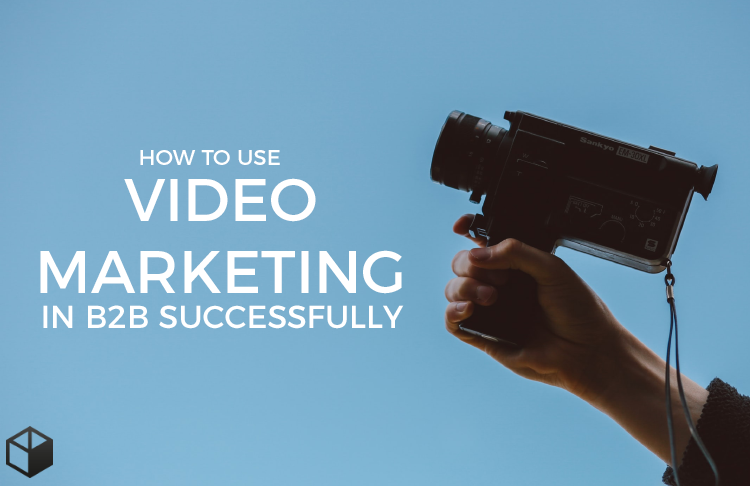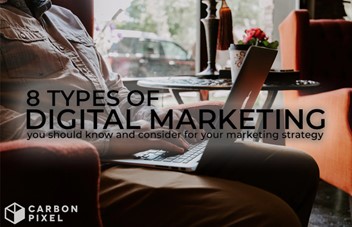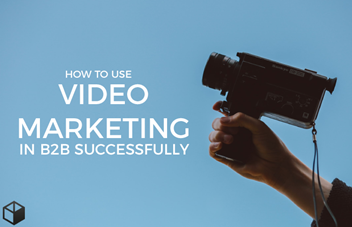It's a no brainer that videos are the superstars of content marketing, I mean billions of hours of video are watch every single day. Videos do a great deal in conveying emotion like no other medium, they are very frequently shared, improve the opening rates of e-mails and keep visitors on a website for longer. Especially in the B2B sector, where mostly complex and less emotional products are sold, videos can be an important lever in marketing. This blog post will show you which formats are particularly relevant for B2B companies and how to get the most out of your videos so that every penny you invested counts.
Which format is right for me?
1) Explantory Videos
Explanatory videos are particularly useful for explaining the advantages, functionalities and use of products and services. With illustrations, videos and a voice-over you can bring B2B products closer to the customer in an easy and likeable way.
Product information can be portrayed through a narrative, making it far more interesting for the customer. These videos are well suites to be integrated into your own website and shared across social media channels. You also don't have to just explain about a product or service. You can use this video to share facts and elements from your area of expertise.
Essentially, an explanatory video is known as "Helpvertising", it's a video where you help a customer to understand something and advertise your product, services and brand at the same time.
Take this video from Hubspot for example, they explain what SSL is then, at the end promote their services.
2) Product Videos
Product videos are exactly what the name suggests, they are videos that show off or launch your product. These can be in a number of styles from simple animations to high-quality videos of the product in use. Everything here is possible. Product videos are often shown at trade fairs, shared on social media and also uploaded to your website. It goes without saying that a product video will only really work if you sell physical products.
Take this product video from Oneplus for example, promoting the Oneplus 7 Pro.
3) Image Film
Image films are all about drawing attention to your company, your philosophy and your performance, sometimes in a very elaborate way. For example, production facilities and employees can be shown in a certain way to provide a glimpse behind the scenes of your business and help to convey an authentic image.
Image films are often designed in a particularly creative way and produced with high quality. In the web series "Working Hero", companies from the construction machinery industry present the “heroes” of their team, their daily tasks, successes and difficulties so the customer can see what goes into projects.
4) Review Videos
A great way to really show off your product and services is by approaching an existing customer and ask them to tell you what they think about it to a camera, asking them to detail how it affects their business. These kinds of videos are a great way to show existing customers how a product or service is working for other businesses out there and engraves that mentality of "If it works for them, it'll work for me" Plus, it also gives you some great testimonials and case studies so it tackles multiple areas.
5) Webinars
If you have the ability to host a webinar, we recommend doing so. Set a date and invite as many people as you can. It's a great way for you to show off your expertise, promote a product and more! Webinars are usually recorded and made available as a webcast later. In contrast to the other video formats, webinars are less suitable for increasing awareness; they are usually aimed at people who have already expressed their interest and are therefore applied at a later stage of the customer journey.
They are particularly suitable for giving potential customers a deeper insight into products and services, helping them to make their purchase decision and answering questions directly.
Tips for successful video marketing in B2B
The production of a great video alone is not yet likely to lead to success so please don't expect success just because you have a killer video. But with these few tips below you can make your film an effective tool for your B2B marketing.
1) Set Goals
It really should be obvious, but set your goals - what do you want to achieve? When do you want to achieve it by? Setting goals helps you to keep on track, report against something and have something to compare future and existing campaigns against. Make sure to set your goals before creating the video, as the nature and design of the content depends heavily on it. It is up to you whether you want to attract attention, strengthen your image or advertise specific products. Based on your goals, you can then select the appropriate video format for your company
2) Organic social seeding
Once your video is finished, it has to be distributed in order for your message to reach as many users as possible. Compared to other types of content, videos are particularly often shared and therefore have a higher potential to spread organically.
Therefore, share your videos on all platforms used by your company and also your website. You can also pick up the content repeatedly and post it again at a later time.
If possible, you should divide longer videos into several shorter sequences so that you can compose more posts and benefit from them on social media over a longer period, it's recommended that a video should never exceed 3 mins.
Collaborating with influencers and bloggers from your industry is also a good way of distributing your films quickly. If a well-known blogger, for instance, reports about a product and embeds your video, the chance for it to spread quickly is very high.
3) Advertise
The organic spreading of your video content is important, but more views can also be generated through advertisements.
Using Google AdWords, you can place TrueView Ads that are played on YouTube and the Google Display Network. Even on Facebook, Instagram and Twitter Video Ads can be placed for more views. The advantage here are the good targeting possibilities through which the target audience can be segmented more precisely meaning you'll reach the people your video was created for.






